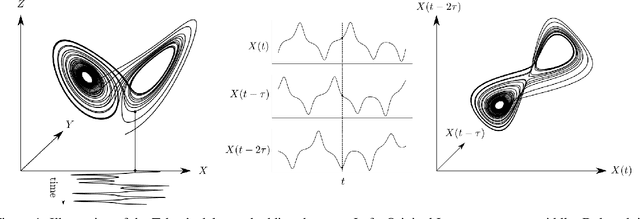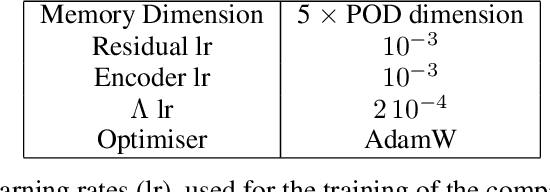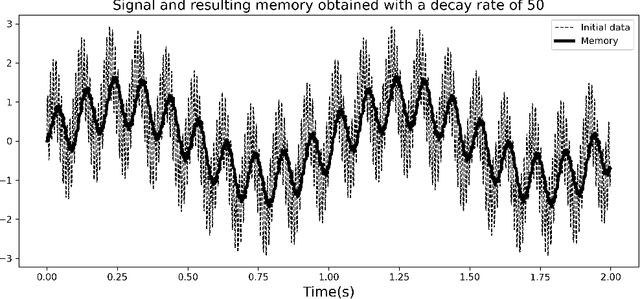Emmanuel Menier
LISN, TAU
Physics-Learning AI Datamodel (PLAID) datasets: a collection of physics simulations for machine learning
May 08, 2025Abstract:Machine learning-based surrogate models have emerged as a powerful tool to accelerate simulation-driven scientific workflows. However, their widespread adoption is hindered by the lack of large-scale, diverse, and standardized datasets tailored to physics-based simulations. While existing initiatives provide valuable contributions, many are limited in scope-focusing on specific physics domains, relying on fragmented tooling, or adhering to overly simplistic datamodels that restrict generalization. To address these limitations, we introduce PLAID (Physics-Learning AI Datamodel), a flexible and extensible framework for representing and sharing datasets of physics simulations. PLAID defines a unified standard for describing simulation data and is accompanied by a library for creating, reading, and manipulating complex datasets across a wide range of physical use cases (gitlab.com/drti/plaid). We release six carefully crafted datasets under the PLAID standard, covering structural mechanics and computational fluid dynamics, and provide baseline benchmarks using representative learning methods. Benchmarking tools are made available on Hugging Face, enabling direct participation by the community and contribution to ongoing evaluation efforts (huggingface.co/PLAIDcompetitions).
Neural DDEs with Learnable Delays for Partially Observed Dynamical Systems
Oct 03, 2024Abstract:Many successful methods to learn dynamical systems from data have recently been introduced. Such methods often rely on the availability of the system's full state. However, this underlying hypothesis is rather restrictive as it is typically not confirmed in practice, leaving us with partially observed systems. Utilizing the Mori-Zwanzig (MZ) formalism from statistical physics, we demonstrate that Constant Lag Neural Delay Differential Equations (NDDEs) naturally serve as suitable models for partially observed states. In empirical evaluation, we show that such models outperform existing methods on both synthetic and experimental data.
Interpretable learning of effective dynamics for multiscale systems
Sep 11, 2023



Abstract:The modeling and simulation of high-dimensional multiscale systems is a critical challenge across all areas of science and engineering. It is broadly believed that even with today's computer advances resolving all spatiotemporal scales described by the governing equations remains a remote target. This realization has prompted intense efforts to develop model order reduction techniques. In recent years, techniques based on deep recurrent neural networks have produced promising results for the modeling and simulation of complex spatiotemporal systems and offer large flexibility in model development as they can incorporate experimental and computational data. However, neural networks lack interpretability, which limits their utility and generalizability across complex systems. Here we propose a novel framework of Interpretable Learning Effective Dynamics (iLED) that offers comparable accuracy to state-of-the-art recurrent neural network-based approaches while providing the added benefit of interpretability. The iLED framework is motivated by Mori-Zwanzig and Koopman operator theory, which justifies the choice of the specific architecture. We demonstrate the effectiveness of the proposed framework in simulations of three benchmark multiscale systems. Our results show that the iLED framework can generate accurate predictions and obtain interpretable dynamics, making it a promising approach for solving high-dimensional multiscale systems.
Continuous Methods : Adaptively intrusive reduced order model closure
Nov 30, 2022


Abstract:Reduced order modeling methods are often used as a mean to reduce simulation costs in industrial applications. Despite their computational advantages, reduced order models (ROMs) often fail to accurately reproduce complex dynamics encountered in real life applications. To address this challenge, we leverage NeuralODEs to propose a novel ROM correction approach based on a time-continuous memory formulation. Finally, experimental results show that our proposed method provides a high level of accuracy while retaining the low computational costs inherent to reduced models.
Continuous Methods : Hamiltonian Domain Translation
Jul 08, 2022


Abstract:This paper proposes a novel approach to domain translation. Leveraging established parallels between generative models and dynamical systems, we propose a reformulation of the Cycle-GAN architecture. By embedding our model with a Hamiltonian structure, we obtain a continuous, expressive and most importantly invertible generative model for domain translation.
CD-ROM: Complementary Deep-Reduced Order Model
Mar 10, 2022



Abstract:Model order reduction through the POD-Galerkin method can lead to dramatic gains in terms of computational efficiency in solving physical problems. However, the applicability of the method to non linear high-dimensional dynamical systems such as the Navier-Stokes equations has been shown to be limited, producing inaccurate and sometimes unstable models. This paper proposes a closure modeling approach for classical POD-Galerkin reduced order models (ROM). We use multi layer perceptrons (MLP) to learn a continuous in time closure model through the recently proposed Neural ODE method. Inspired by Taken's theorem as well as the Mori-Zwanzig formalism, we augment ROMs with a delay differential equation architecture to model non-Markovian effects in reduced models. The proposed model, called CD-ROM (Complementary Deep-Reduced Order Model) is able to retain information from past states of the system and use it to correct the imperfect reduced dynamics. The model can be integrated in time as a system of ordinary differential equations using any classical time marching scheme. We demonstrate the ability of our CD-ROM approach to improve the accuracy of POD-Galerkin models on two CFD examples, even in configurations unseen during training.
 Add to Chrome
Add to Chrome Add to Firefox
Add to Firefox Add to Edge
Add to Edge